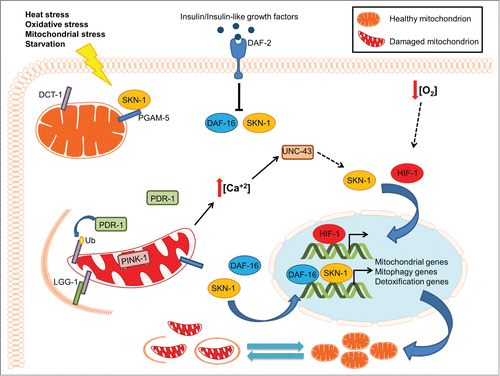Figures & data
Figure 1. The interplay between mitochondrial biogenesis and mitophagy during aging. Under normal conditions, basal mitophagy flux regulates mitochondrial content depending on the metabolic state of the cell. Under stress conditions, mitophagy induction eliminates damaged mitochondria preserving mitochondrial integrity and promoting cell survival. Excessive mitochondrial damage results in the stimulation of several transcription factors, including SKN-1, DAF-16 and HIF-1, to enhance mitophagy and promote mitochondrial biogenesis by regulating the expression of the DCT-1 mitophagy mediator and several mitochondrial genes. The tight coordination between the opposing processes of mitochondrial biogenesis and removal allows cells to adjust their mitochondrial population in response to extracellular or intracellular signals, preserving mitochondrial function and cell homeostasis.

